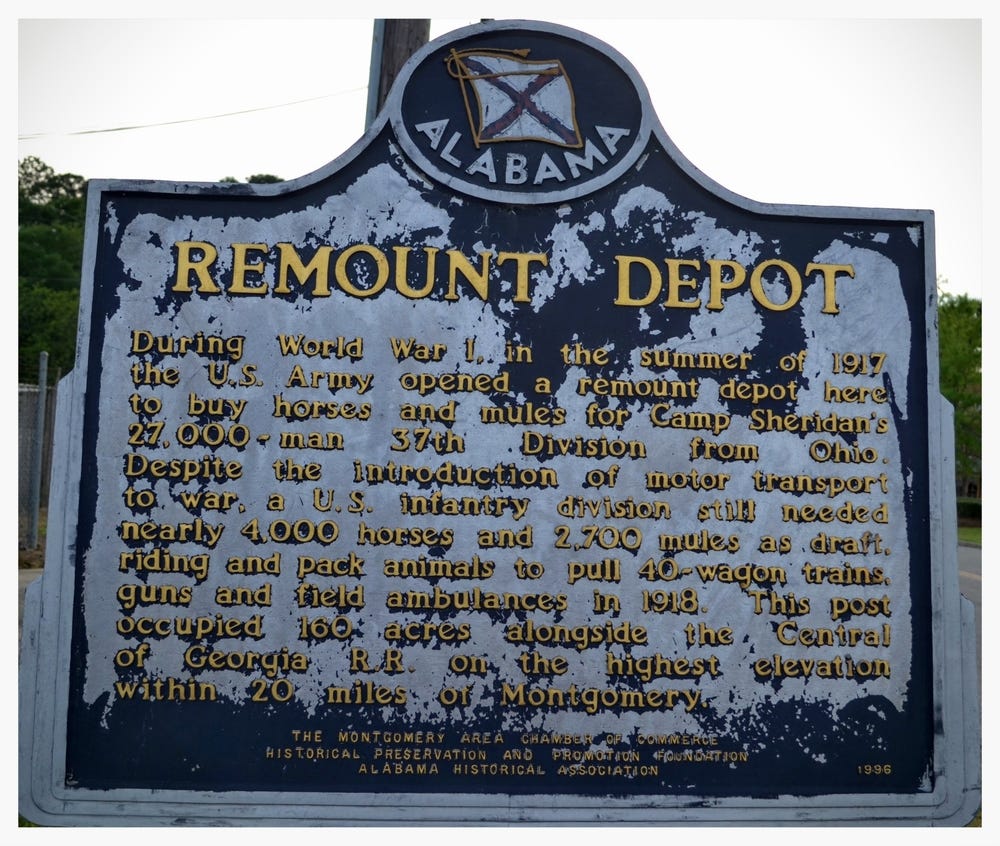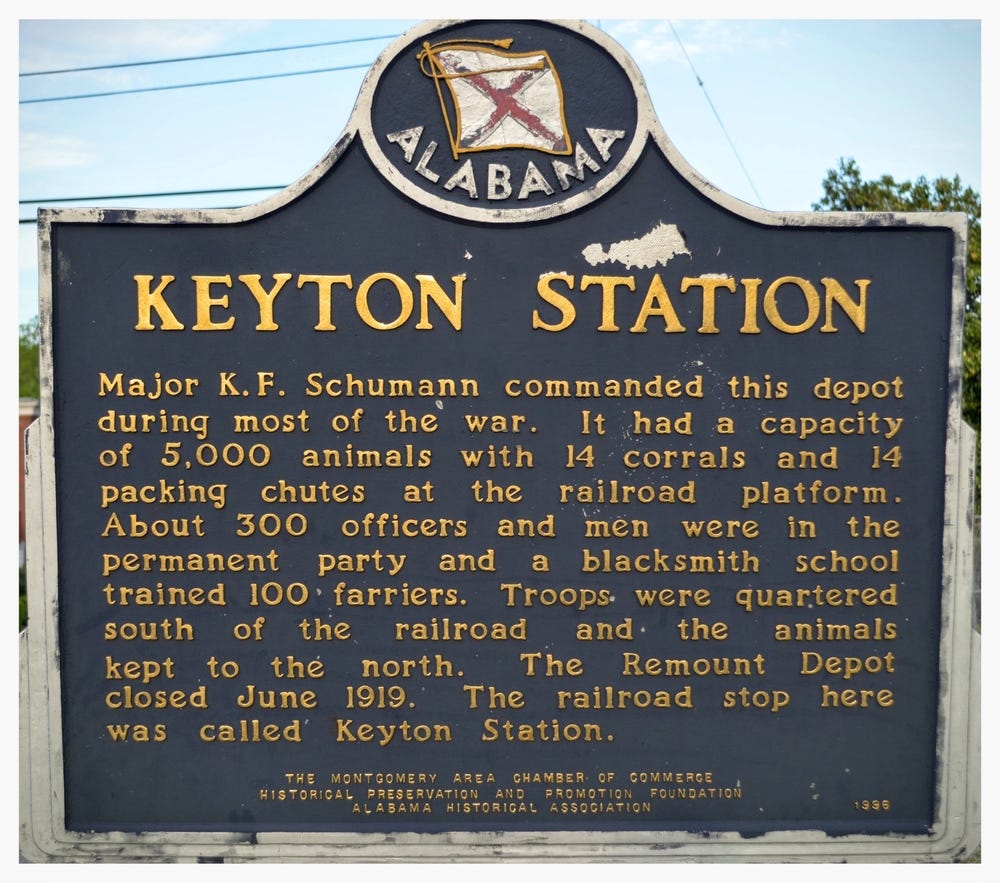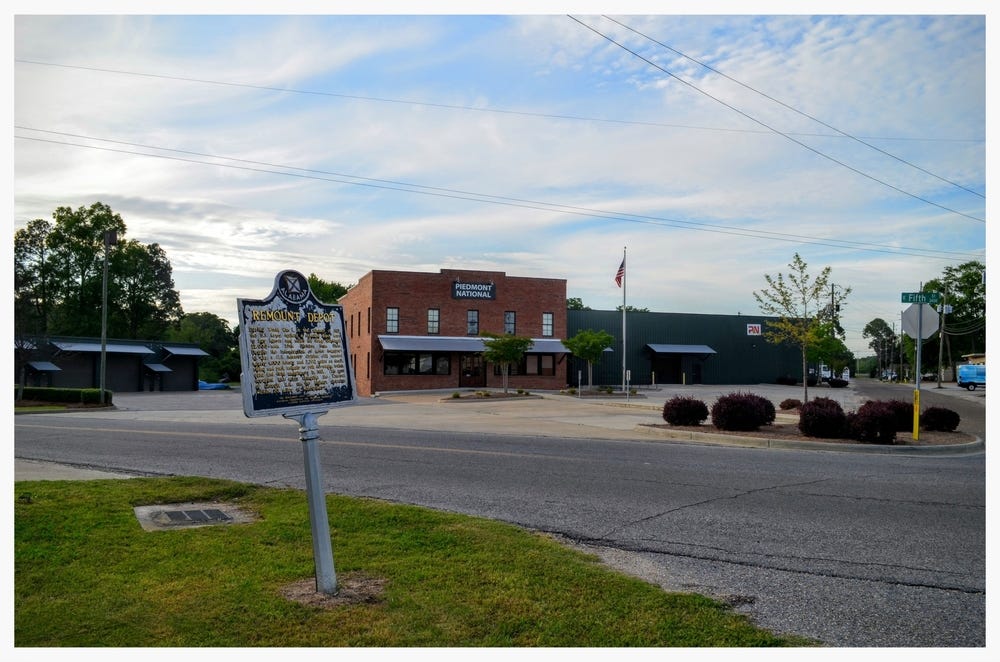Remount Depot
Well, I missed my first post date last Thursday, but we're going to get back on track today. Starting in the early days of the Civil War, the United States Army decided to start providing horses and mules for all cavalry and artillery units with funding from the federal government. In previous wars, work animals were often provided by the officers of individual units. Procurement and training of horses and mules was provided by the Quartermaster Corps, and in 1908 the Remount Service was set up as a division of that Corps. Purchasing centers were established in Idaho, Virginia, Kentucky, Wyoming, Texas, Colorado and California, while Fort Reno in Oklahoma was established as processing and distribution center for the new military animals. In 1918, the Remount Service even ventured into breeding its own new horses and mules.
The U.S. Army established Camp Sheridan on the north side of Montgomery in July 1917, and we'll cover the camp in more detail in a future post. That same summer a remount depot was established on a 160-acre plot closer to downtown. The depot was built near the Keyton Station train stop, while Camp Sheridan was established near the Vandiver Park stop. The new depot had room for 5,000 animals, and including a blacksmithing school to train new farriers.
The next two pictures show the two sides of the historical marker, and as always I've included the transcriptions. The third photo shows the marker's current setting.
“Remount Depot
During World War I, in the summer of 1917 the U.S. Army opened a remount depot here to buy horses and mules for Camp Sheridan’s 27,000-man 37th Division from Ohio. Despite the introduction of motor transport to war, a U.S. infantry division still needed nearly 4,000 horses and 2,700 mules as draft, riding and pack animals to pull 40-wagon trains, guns and field ambulances in 1918. This post occupied 160 acres alongside the Central of Georgia R.R. on the highest elevation within 20 miles of Montgomery.”
“Keyton Station
Major K.F. Schumann commanded this depot during most of the war. It had a capacity of 5,000 animals with 14 corrals and 14 packing chutes at the railroad platform. About 300 officers and men were in the permanent party and a blacksmith school trained 300 farriers. Troops were quartered south of the railroad and the animals kept to the north. The Remount Depot closed June 1919. The railroad stop here was called Keyton Station.”




